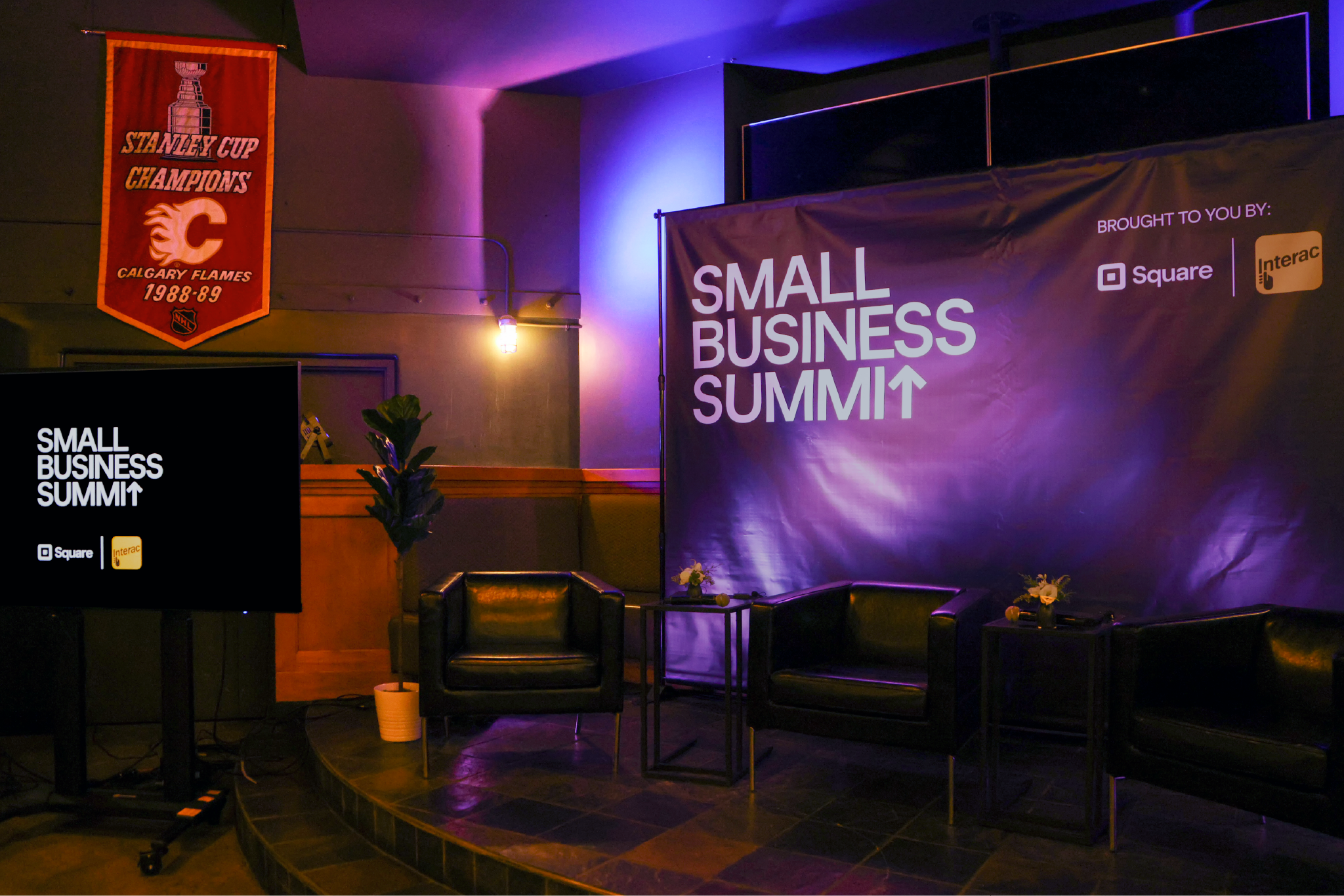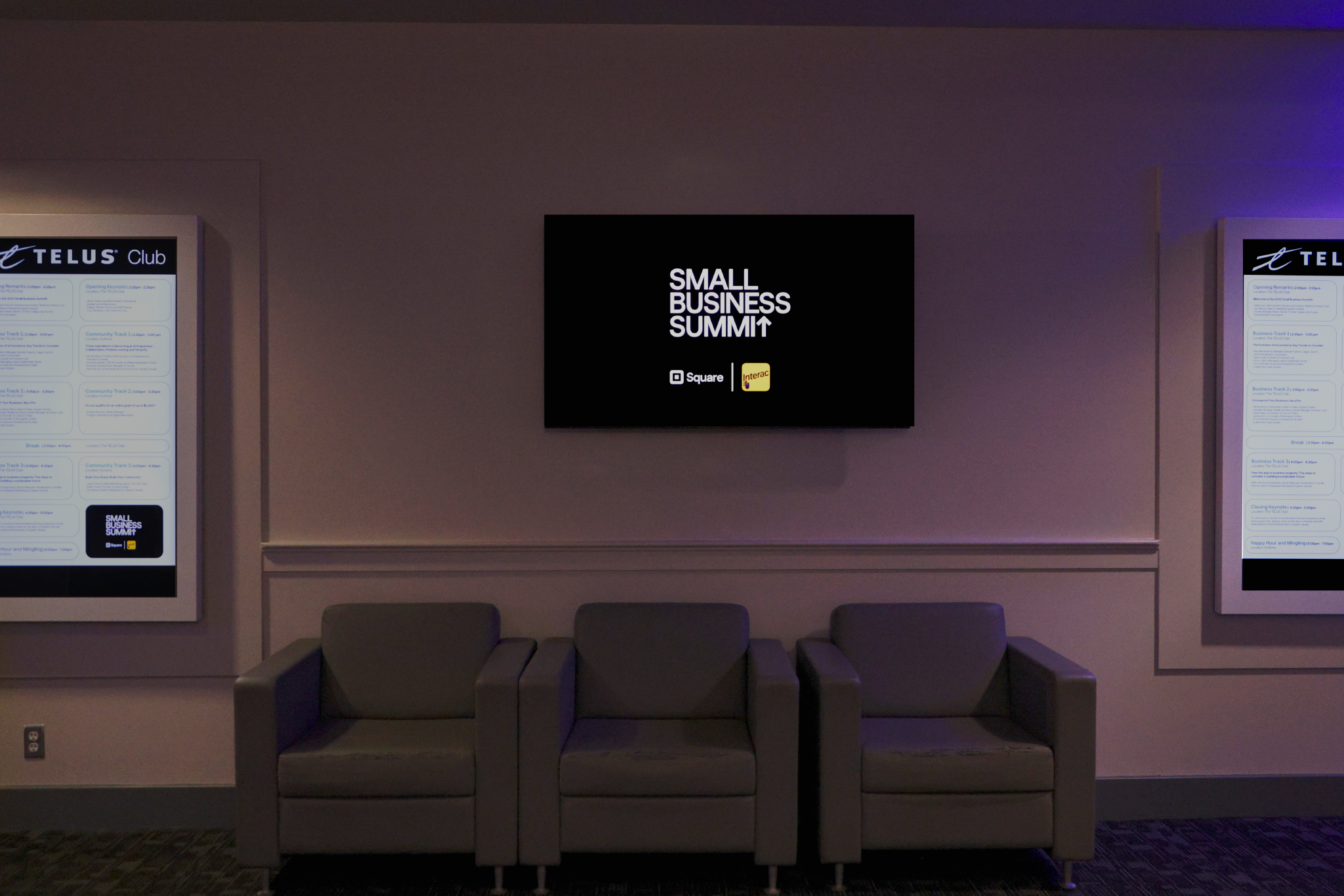In the third quarter of 2021, the NHL’s Calgary Flames and the CFL’s Calgary Stampeders reopened their doors to eager fans after a long pause – in the case of the Stampeders, it had been 698 long days since fans had cheered a kickoff at McMahon Stadium.
The challenge: The world had changed during the pandemic, and people’s payment habits had changed with it. And yet, McMahon Stadium and the Flames’ Scotiabank Saddledome were still mostly reliant on cash. It was a far cry from the quick, contactless payment convenience people had come to expect, not to mention that dealing with physical money had always been operationally inconvenient for the teams’ parent company, the Calgary Sports and Entertainment Corporation (CSEC).
Interac, Square and the CSEC came together to solve this challenge. They took advantage of the ubiquity, speed and convenience of Interac Debit contactless payments via the easy-to-implement Square Register and Square Terminal point-of-sale systems so fans could enjoy a faster and more seamless experience paying for snacks, drinks and souvenirs than ever before. And as these three leading organizations collaborated, they seized the chance to boost the 55,000-plus small businesses that power Calgary’s economy – giving Calgarians a chance to cheer for local entrepreneurs as well as their favourites on the field and the ice.
To learn about how this unique program came together to create a win for Calgary’s sports fans and its small businesses through the #YYCSpotlight Business Giveaway and more, Interac spoke with Isabel Lee, Director of Client Solutions and Investor Relations, Interac; Karisa Marra, Head of Sales, Square Canada; and Jason Johnson, Senior Partnership Sales Executive, CSEC.
Can you talk about the payments challenge that initially brought you all together?
Jason Johnson, CSEC: One of our biggest pain points at the stadiums was payments. Before the pandemic, we were taking cash, mostly. It was a lot of extra time and work to issue change back. We needed to introduce new technologies, and the point-of-sale area was a real priority for us.
Isabel Lee, Interac: Prior to these facilities reopening in 2021, if you were to go and watch a game at the Saddledome or at McMahon Stadium, the majority of the transactions were taking place with cash. CSEC knew this wasn’t an optimal experience for fans. And as our research at Interac was showing, consumers’ payment behaviours had moved dramatically in favour of contactless options during the pandemic, in what we’ve been calling the “Big Shift.” The time had really come to improve the fan experience in Calgary by modernizing the payment interactions. Ultimately contactless payment is about putting the customer first.
Karisa Marra, Square: We thought a lot, and CSEC thought a lot, about that time spent in line. Our question became, “How do we create a really great experience for our customers? And how do we adopt the best technology that we have available to us in Canada?” And there’s no surprise, Interac Debit is one of the largest payment types that we see on our platforms in Canada. By not having that available to their customers at CSEC stadiums, they were losing out on sales, or at least creating that additional obstacle for their guests buying items while in the stadium.
The solution for the payments challenge was to make merchandise and concessions at Scotiabank Saddledome and the McMahon Stadium cash-free as of fall 2021, by introducing Square Register and Square Terminal with Interac Debit enabled. How did contactless payments improve the fan experience?
JJ: The idea was to try to reduce transaction times. Together, we accomplished that. We were moving people through lines at an unprecedented rate, improving the fan experience by making our lines shorter and faster, and also giving people a very painless and seamless transaction.
KM: [Offering fast, contactless digital payments] gets fans back to their seats — or keeps them in their seats so they can order directly from there — which is massive. That’s the biggest piece for customers.
By rolling out a sophisticated contactless payments system across two large venues, you were also hoping to demonstrate how easy it is to modernize the point-of-sale for a business of any size. Can you talk a bit about the scalability of contactless payments?
IL: Businesses, especially small businesses, are still making investments in adopting faster contactless payments at the point of sale. Square and Interac have both worked to make it easier than it used to be. If you looked at this 10 years ago, it would take you weeks to set up a merchant account, go through the adjudication process and get approved to get your equipment. Today you can order a terminal, download an app, and you’re up and ready to start accepting payments in a matter of minutes. It’s exciting because it makes it easier for businesses of all sizes, including small businesses, to get up and running without a lot of hurdles to jump through. What it means is whether you’re a new business that still doesn’t have a lot of capital or you’re a 45,000-seat stadium, you’re on the same playing field in terms of the contactless payments technology you can offer your customers.
KM: [We’re showing that the advantages of contactless payments] can be accessed by a small farmer’s market seller or a large stadium that operates almost like a shopping mall, or a multi-layered business under one roof. The goal really is to support businesses of all sizes.
And speaking of small businesses, this program took on a bigger life beyond payments. Can you tell us how you created an opportunity to support small businesses?
IL: This collaboration was rooted in three leading organizations coming together to demonstrate the convenience, opportunity and scalability that an upgrade to fast contactless payments can offer, on a pretty unique scale – namely, thousands of people arriving at a facility who are all looking to make quick transactions so they can enjoy a game.
But we always want to look for ways to challenge ourselves to do more when we’re collaborating with other organizations. Our role as Interac is to serve as a connector, whether it’s in technology or in Canadian communities. So, we look for chances to create a win-win-win all around, not just for the partners but for the community and the economy at large. Through this program, we saw an opportunity to leverage CSEC’s large audiences to create support for local small businesses.
JJ: Our organization is always interested in finding unique ways to give back to the Calgary community. When we started talking with Interac and Square, we came up with the idea of running a program where we could offer small businesses a large platform to advertise.
IL: The #YYCSpotlight contest was our idea to get the fans engaged. The fans nominated their favourite local Calgarian small business, and the winning nominee would receive a prize package. As part of the prize package, they would be able to feature their business in the ad spaces at both the Saddledome and McMahon Stadium.
KM: #YYCSpotlight is actually creating a community within the stadium as fans nominate businesses from their community. I thought that was a unique and interesting way for us to come together and create some visibility and awareness for the Calgary business community with a mass audience at a game.
We also held a small business summit to bring the community together. We created access to other business owners within the community and invited leaders to talk about ways to overcome some of the struggles small businesses are currently facing. And we talked about small businesses getting access to tools to continue to grow, including payments technologies. Supporting small businesses is important for Square, and that’s something that we align closely with Interac on.
Why was supporting small businesses so important for all of you?
IL: Small businesses make up 97 per cent of all merchants across Canada. They’re important to Interac and we’re committed to helping them grow. We’ve got a long history of investing in and strengthening small business. Interac has helped small businesses modernize their payments to adapt in an evolving economy. But we also want to provide a meaningful impact in other ways, from connecting small businesses to their local communities or supporting a financial literacy program for diverse entrepreneurs.
We had surveyed Canadians in 2021, and we knew the majority of Canadians are keen to support local businesses, too. Most Canadians recognize how negatively impacted these small businesses were during the pandemic.
KM: Without small business, we’re nothing. What makes us proud Canadians is supporting these businesses in our community, going out and buying something from the person next door. Small businesses are the backbone of Canada. We need to continue to encourage them to grow and give them the technology they need to succeed.
Isabel, what made this a successful program from the Interac point of view?
IL: Again, our history is that we’ve always acted as the connector. We truly shine when we connect partners together to do something really great. Interac has that unique ability to bring together the right partners to make something magical happen.
I think a successful partnership — at Interac, but anywhere really — happens when everybody sets out their own individual goals and we’re able to meet each goal. What this program is really about is providing an impact to Calgary’s small business community in a new, different way, engaging with the general public and amplifying the voices of the small business community.
Now we’re asking ourselves: Is this going to get more exposure for local small businesses? Will these small businesses see an uplift in their sales volumes after they get featured at one of the games? This is all vital data that we’ll be collecting from each of these winners.
What can you tell us about businesses’ reactions to the #YYCSpotlight Business Giveaway so far?
JJ: We have heard that it’s really lifted their business and given them a great opportunity to get their names out in the community. The first winner of the contest was Caitlynne Medrek of YYC Princess. Caitlynne spoke very highly of the opportunity to allow her to advertise in front of between 20,000 and 30,000 fans, run advertising on screens that get visibility on a national TV broadcast — an opportunity that she would never have normally. And we’ve received similar feedback from all the businesses that we’ve awarded this package to.
IL: Her reaction to everything was so genuine and so true. It was a touching moment to see her eyes when she saw her logo lit up on the big screen. I remember sitting with my peers from Square and CSEC and thinking, “OK, this is why we’re doing it.”







